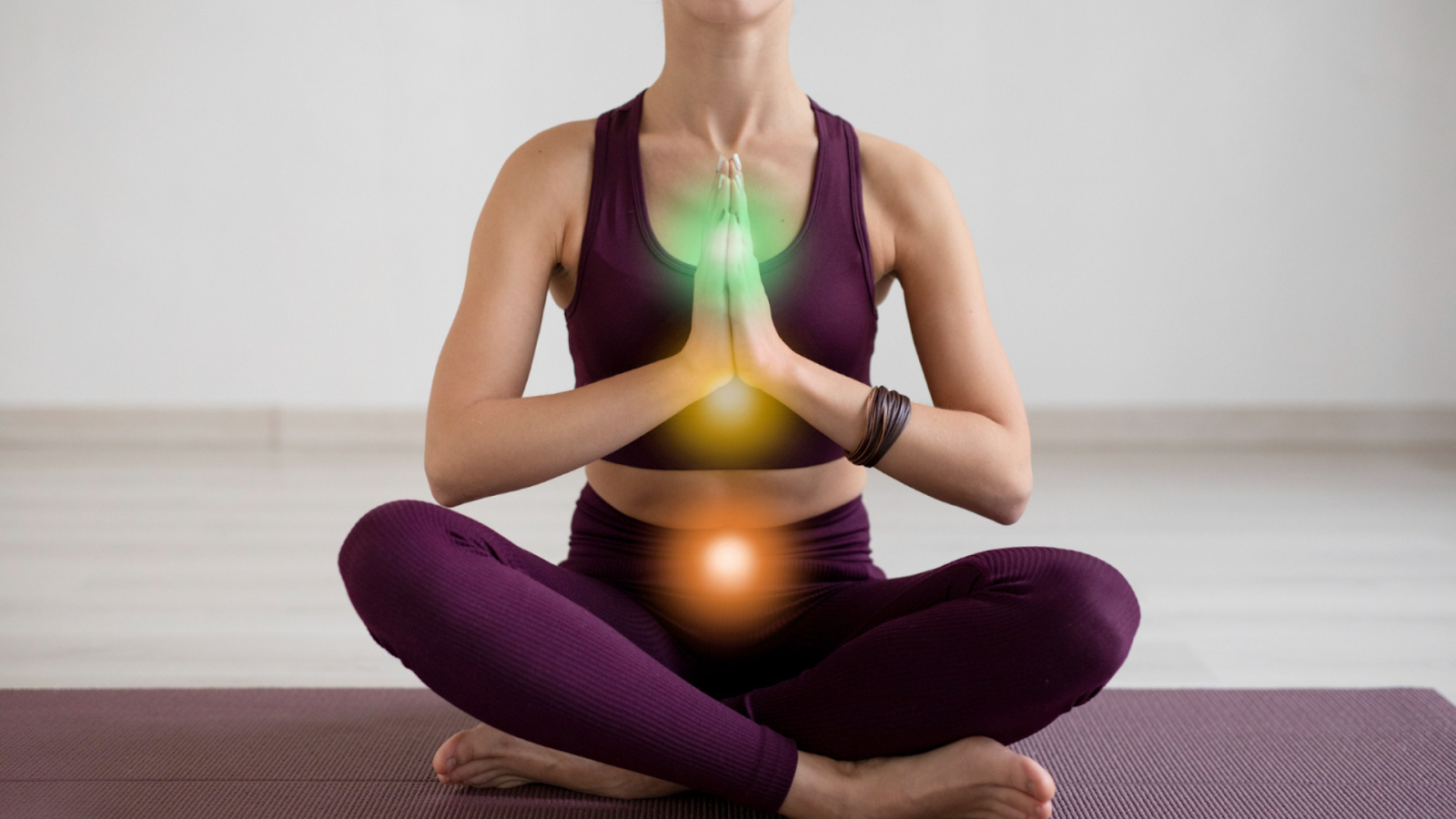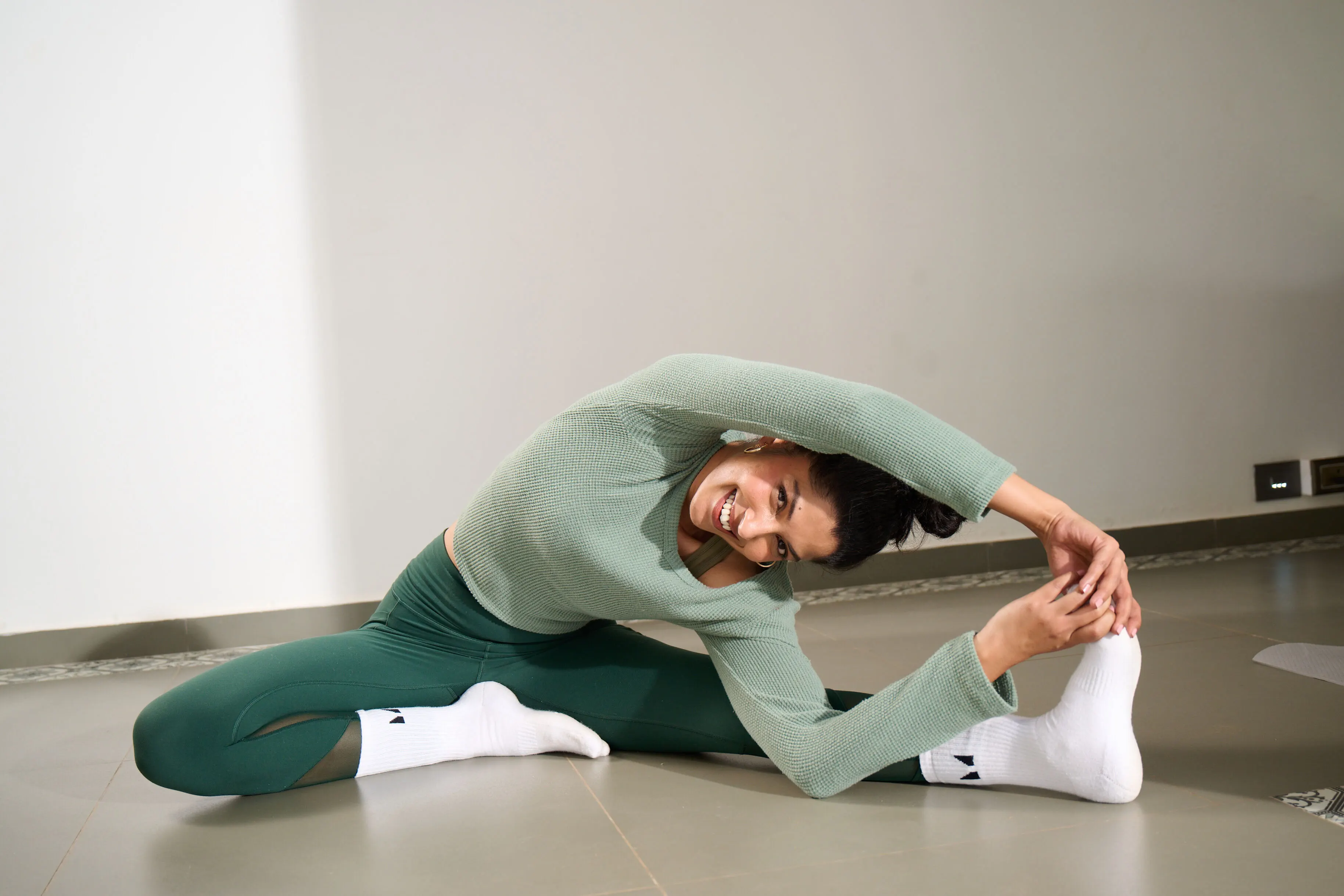Maintaining focus and productivity is a difficult feat to many today. With constant digital interruptions and notifications, meetings, and looming deadlines, it's easy to feel overwhelmed or distracted. This is where mindfulness practices can make a profound difference. Mindfulness, especially when combined with yoga-based practices, helps to center the mind, improve focus, and enhance overall productivity. By consciously bringing our attention to the present moment, mindfulness calms mental clutter, reduces stress, and opens up space for clearer thinking.
Simple, yoga-based mindfulness practices in your daily routine can help sharpen concentration, improve task management, and make you more efficient in your professional and personal life. Here are five powerful yoga-based mindfulness practices that can give your productivity the boost it needs.
1. Breath Awareness and Breath Exercise : with Pranayama:

Pranayama, or breath control, is a key element of yoga practice. One of the simplest and most effective pranayama techniques is deep belly breathing, which involves breathing slowly and deeply into your diaphragm, and then exhaling fully. This helps regulate the nervous system, bringing a sense of calm and focus. Other beneficial Pranayama techniques that can boost focus and productivity are Ujjayi (Victorious Breath) and Nadi Shodhana (Alternate Nostril Breathing).
Very often shallow, rapid breathing (a result of stress), triggers the body’s fight-or-flight response, leading to anxiety and decreased cognitive performance. By practicing deep, mindful breathing for even just five minutes, you can activate the parasympathetic nervous system, which helps the body relax. As a result, you reduce stress, sharpen your focus, and enhance your ability to think clearly. Regular breath awareness also improves oxygen flow to the brain, fostering clearer thinking, faster decision-making, and better creativity.
Integrate breath awareness into your workday by pausing every hour to take 10 deep, mindful breaths. This mini-break will help refresh your mind and keep you productive throughout the day.
2. Mindful Movement:

Mindful movement through yoga asanas involves slow, controlled movements synchronized with your breath. Practicing asanas with complete awareness on the mat will help you stay in the present moment even off the mat. Poses like Tadasana (Mountain Pose) or Vrksasana (Tree Pose) can be done at any time, even in small spaces, like your office.
Sitting for long periods of time often leads to stiffness, sluggish circulation, and mental fatigue, which can hamper productivity. Incorporating asana practice into your day helps break the cycle of stagnation. The simplest yoga poses can improve blood circulation, alleviate tension in muscles, and refresh your energy. More importantly, because yoga asanas require focused attention to body alignment and breath, they help train the mind to stay present and engaged, enhancing concentration when you return to your tasks. Start by trying to practice a short sequence of yoga stretches on your chair (like shoulder rolls, cat-cow stretch, or seated forward folds) during breaks to boost your physical and mental energy.
3. Body Scan Meditation:

A body scan meditation is a mindfulness practice where you mentally "scan" your body from head to toe, paying attention to any sensations, discomfort, or tension you feel. This practice helps you reconnect with your body and brings awareness to areas of stress or imbalance.
Stress and physical discomfort can silently drain your energy and distract your focus. By tuning into your body regularly, you become more aware of tension or discomfort that you might otherwise ignore, allowing you to address it before it impacts your work. Moreover, the body scan enhances your ability to maintain focus by training your brain to detect and release physical and mental distractions. This practice is particularly helpful during long work hours, as it helps you to “reset” and refocus on your tasks with renewed clarity and efficiency.
Take five minutes at the start or end of your workday to perform a body scan. If you're feeling particularly stressed, repeat it during lunch or break times to regain focus and calm.
4. Digital-free Mealtime:

Eating your meals mindfully is the practice of paying full attention to your eating experience, savoring each bite, noticing textures, tastes, and smells, and fully appreciating the nourishment your food provides.
Rushed, unconscious eating (like grabbing a quick bite while working) can leave you feeling sluggish and unfocused. Mindful eating encourages you to slow down, really enjoy your meals, and be present with the experience. This practice helps regulate digestion and ensures your body is getting the nutrients it needs for sustained energy and mental clarity. There are many types of foods that make one feel sluggish and lethargic (known as Rajas), eating at odd hours or eating when you’re not really hungry can all cause a depletion in energy and focus. By being more mindful about what and how you eat, you can avoid these energy dips and sluggishness throughout the day, leading to better concentration and more sustained productivity.
Set aside dedicated time for your meals, even if it’s just 15 minutes. Focus entirely on your food, no phones, no distractions. This small shift can make a big difference in how energized and focused you feel after eating.
5. Gratitude:

Gratitude is the practice of focusing your thoughts on what you're thankful for, whether it's aspects of your personal life, professional achievements, or even small things like a warm cup of coffee. Studies have shown that practicing gratitude can rewire the brain to focus on positive outcomes, rather than dwelling on stress or negativity. By cultivating gratitude, you reduce feelings of overwhelm and shift your focus to what is going well. This positive mindset can increase motivation, improve problem-solving skills, and make you more resilient in the face of challenges. When you feel more content and optimistic, it becomes easier to focus on tasks and approach your work with enthusiasm rather than stress.
Start your workday with a short gratitude meditation. Take five minutes to close your eyes, breathe deeply, and mentally list three things you’re grateful for. This will set a positive tone for the day and increase your productivity.
Incorporating simple mindfulness practices into your daily routine doesn’t have to be time-consuming. The key is consistency. Gradually you will notice a transformation in everyday life, one where your workday is more focused and productive. These practices not only enhance your ability to concentrate but also reduce stress and mental fatigue, helping you to work smarter, not harder.
Start small by trying to incorporate just one of these mindfulness practices into your day and gradually build from there. The benefits will be clear: improved focus, reduced stress, and a more productive, balanced life.
One of the best ways to boost your productivity is to carve out time in your calendar for regular yoga classes - even if you have only 30-minutes.
Meta Description: Explore the best and most simple mindfulness practices to boost your productivity and focus at work.
Summary: Simple, yoga-based mindfulness practices in your daily routine can help sharpen concentration, improve task management, and make you more efficient in your professional and personal life.
FAQs:
- Does Pranayama help boost productivity?
Yes, Pranayama can activate the parasympathetic nervous system, which helps the body relax. As a result, you reduce stress, sharpen your focus, and enhance your ability to think clearly.
- How do yoga asanas improve mindfulness?
The simplest yoga poses can improve blood circulation, alleviate tension in muscles, and refresh your energy. More importantly, because yoga asanas require focused attention to body alignment and breath, they help train the mind to stay present and engaged, enhancing concentration when you return to your tasks.
- Which meditation is recommended to boost focus?
A body scan meditation is a mindfulness practice where you mentally "scan" your body from head to toe, paying attention to any sensations, discomfort, or tension you feel. This practice helps you reconnect with your body and brings awareness to areas of stress or imbalance.















.jpg)












%201.png)

%201.svg)






%201.svg)